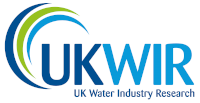IMPORTANT SCIENTIFIC DATA GOES PUBLIC IN WATER INDUSTRY FIRST
30/11/2020
A new database that contains important information on trace chemicals found in treated wastewater has gone live and, in a water industry first, is being made publicly available for anyone to access.
The Chemical Investigations Programme database at https://ukwir.org/sign-up-and-access-the-chemical-investigations-programme-data-access-portal contains final effluent data from 600 Wastewater Treatment Works in England and Wales that have been investigated over the last five years, with corresponding river quality data from upstream and downstream of where these works are located.
The samples taken were analysed for 46 regulated trace substances, 26 substances of emerging concern and 12 supporting measures of wastewater quality, providing a rich source of scientific data.
Crucially it also provides the evidence needed to help inform future policy decisions about how to regulate these trace chemicals – including metals, fire retardants and biocides, hydrocarbons, pharmaceuticals, hormones and personal care products – and what can be done to reduce concentrations, if needed, so that rivers and streams can be protected.
Howard Brett, UKWIR Programme Lead and Wastewater Policy and Strategy Manager at Thames Water, said the decision to make the CIP2 data publicly available was an easy one to make as “it is for the greater good of our nation’s rivers.”
Howard added: “CIP2 is probably the best dataset of its kind anywhere in the world. Having gone to the effort and expense of collecting this data for scientific and regulatory purposes, we believe there is much more to be gained from making the data publicly available while providing a valuable service to others.
“It will provide greater transparency about the contribution of wastewater treatment works to our rivers’ water quality, and the part other sectors play and what action they also need to take.”
Anyone – from the public at large to academics, consultants, government departments and regulators, aquatic and environmental specialists, local community groups and river partnerships – can now access this important data.
The need for the Chemical Investigation Programme is largely driven by UK legislation which has established Environmental Quality Standards (EQS) for a wide range of chemicals in rivers. Many of these chemicals are contained in domestic products and so have the potential to also be present in both untreated and treated wastewater.
To address the challenge of meeting the Environmental Quality Standards, the 10 water and wastewater companies in England and Wales funded a 10+ year programme of work1, with UKWIR appointed to coordinate it.
The project, which is overseen by a steering group comprising water and wastewater companies and regulators, has recently started a third phase of investigations which will complete in 2022.
This will improve understanding of how effective treatment processes are at removing trace chemicals at coastal and transitional water bodies, as well as recognising the additional complexity of emerging issues such as microplastics and antimicrobial resistance.
